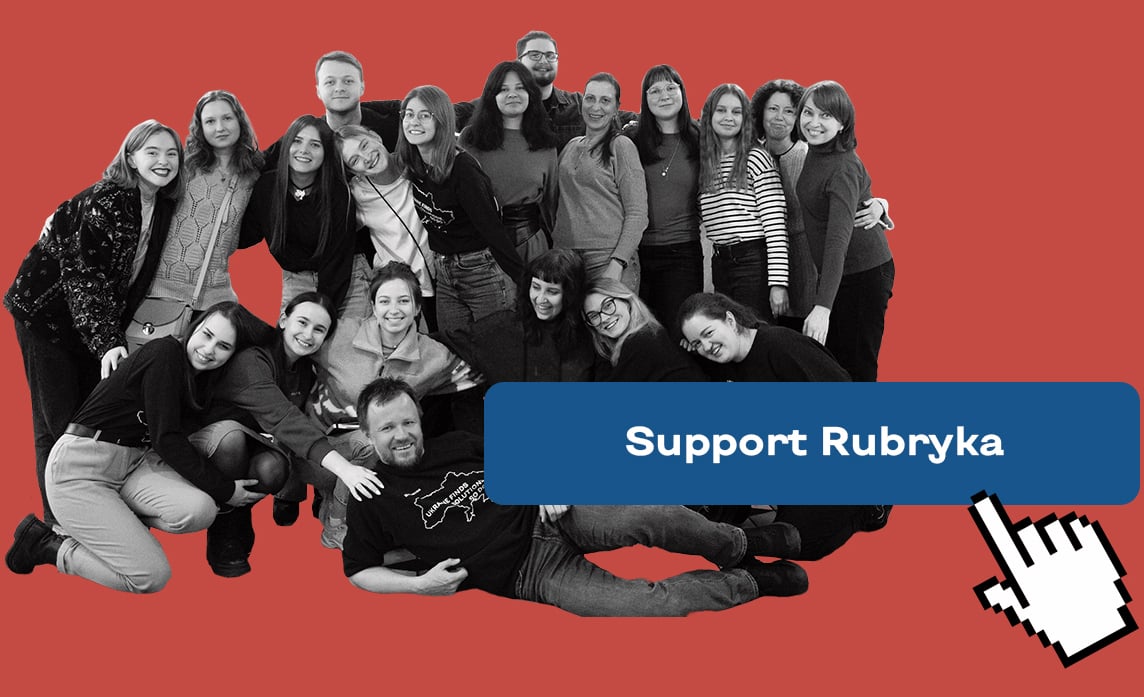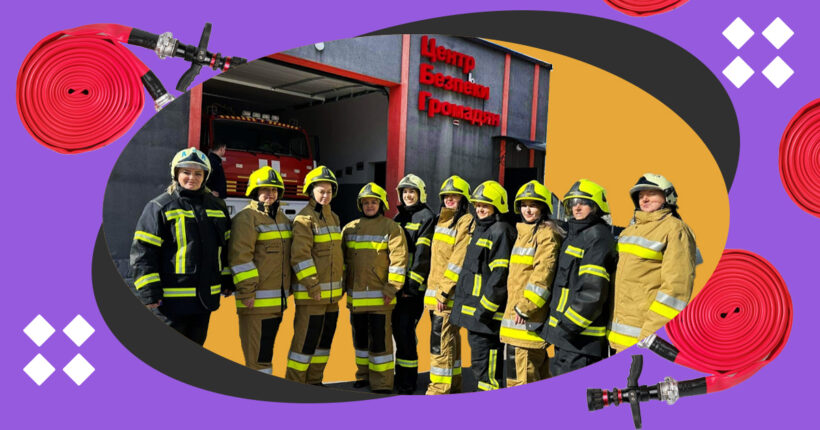
What's the problem?
Fires are disasters that don't wait. In developed Western countries, it takes fire rescue teams 5–6 minutes to arrive at the scene. According to Ukrainian standards, fire trucks should reach the site within 20 minutes from the farthest point. However, in rural areas, even this time is often insufficient for fire rescue units to reach remote villages.
With the start of Russia's full-scale war in 2022, which brought rocket and drone attacks on critical energy or other civilian infrastructure even to the regions far from the front line, the importance of having more rescue teams and supporting first responders and firefighters became even more apparent.
What's the solution?
One of the most crucial factors in successfully handling fires is timely detection and response. A few years ago, communities began creating volunteer fire brigades to reduce response times.
Due to the war, the Ukrainian volunteer firefighting movement continues to grow. While men serve in the army to defend their country, women join volunteer fire brigades in local communities. One of such women's volunteer firefighting teams has started operating in the Velyka Omeliana community in the Rivne region.
Rubryka spoke with Alla Karpiuk, the team's initiator and community head, about how these women are breaking the myth that firefighting is "only men's job."
How does it work?
Any woman can become a rescuer

Women's volunteer firefighting team of the Velyka Omeliana community. Photo from Alla Karpiuk's archive
Ukraine has more than 1,000 state fire rescue units, which is not enough for an adequate response, even with the help of local (municipal) crews. This is where volunteers come in.
A volunteer fire brigade is the first line of assistance to professional firefighters responding to fires and emergencies in their community. Creating volunteer fire crews is a practice that has long been successful in many countries: Poland, Estonia, Germany, Austria, the USA, and Canada. In Poland, for example, the history of volunteer firefighting goes back over 100 years. The State Emergency Service of Ukraine (SES) started creating volunteer fire brigades in Ukraine based on the Polish model.
"I have personally been to Poland several times for experience exchanges. I learned that 70% of their firefighters are volunteers there," says Alla Karpiuk, head of the Velyka Omeliana community. "In most countries, it's normal for the government and community to fully support volunteers. This is very relevant for Ukraine now because of the war; we have dangerous situations not only in the front-line regions."

Women of the Velyka Omeliana community are ready for any emergency. In the center: Alla Karpiuk. Photo from Alla Karpiuk's archive
Ms. Alla proposed creating a volunteer firefighting team in the Velyka Omeliana community. She had to personally participate in extinguishing fires three times.
"After that, I realized that these skills are within the reach of any woman," says Alla Karpiuk.
However, the community couldn't immediately turn the idea into reality. It started addressing this issue in 2017 when locals participated in a Polish project to create a Citizen Safety Center.
The community began building the center and planned to form a local fire rescue team. When the Russian large-scale invasion began, they instead started, like all other local communities, to create volunteer Territorial Defense units. At that time, women were on duty 24/7 alongside the men. According to Alla Karpiuk, it was probably then that the idea of creating a women's fire rescue team took shape.
"Our main task is to help professional firefighters"
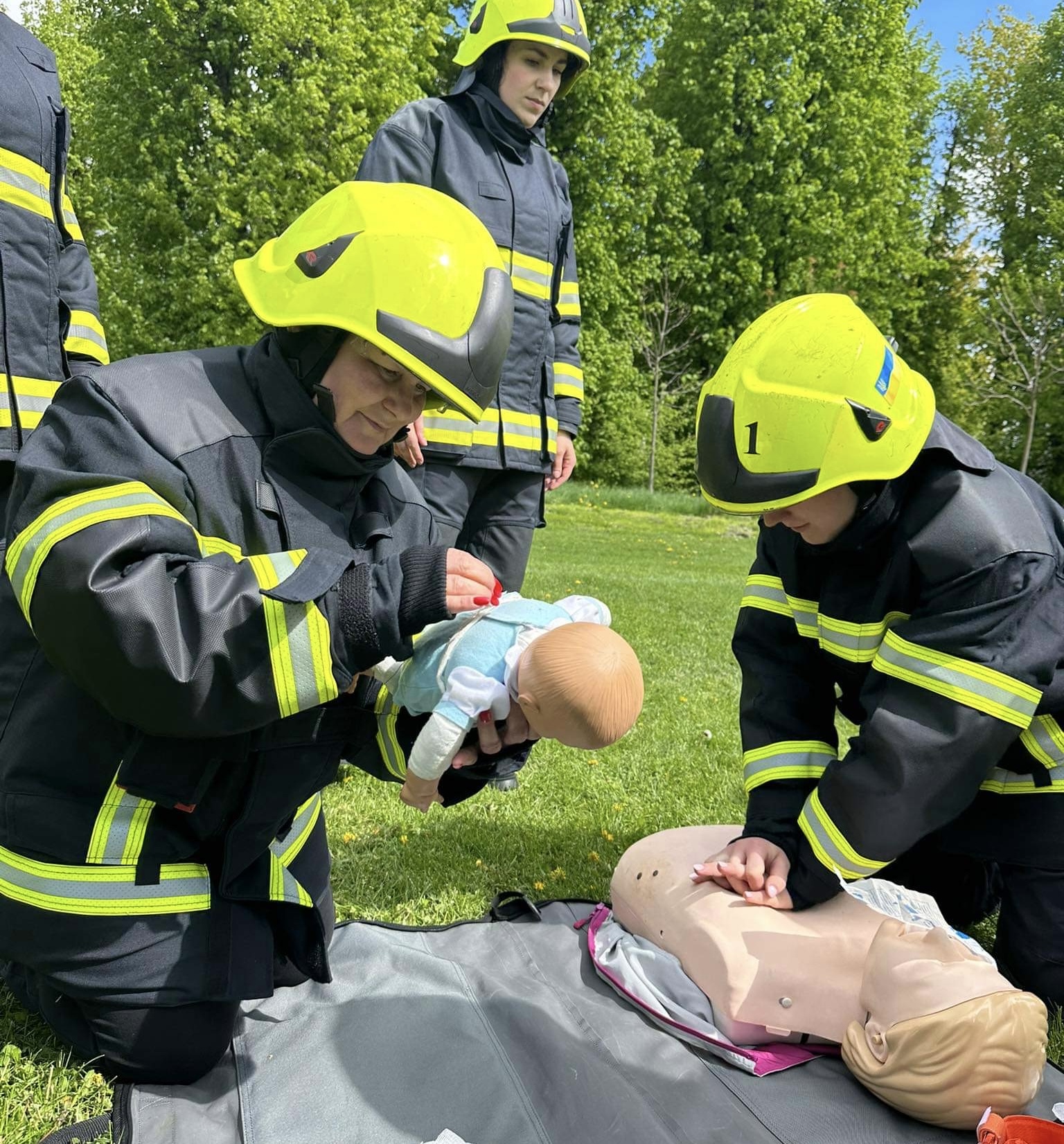
Women volunteers learn to provide pre-hospital aid. Photo from Alla Karpiuk's archive
The head of the community admits that, initially, they didn't clearly understand what needed to be done or what skills were required. But the war changed that.
"We realized that we must know how to provide pre-hospital medical aid, psychological support, and, of course, how to use firefighting equipment. To achieve this, we undergo training conducted by the State Emergency Service's staff training center of the Rivne region," says Alla Karpiuk.
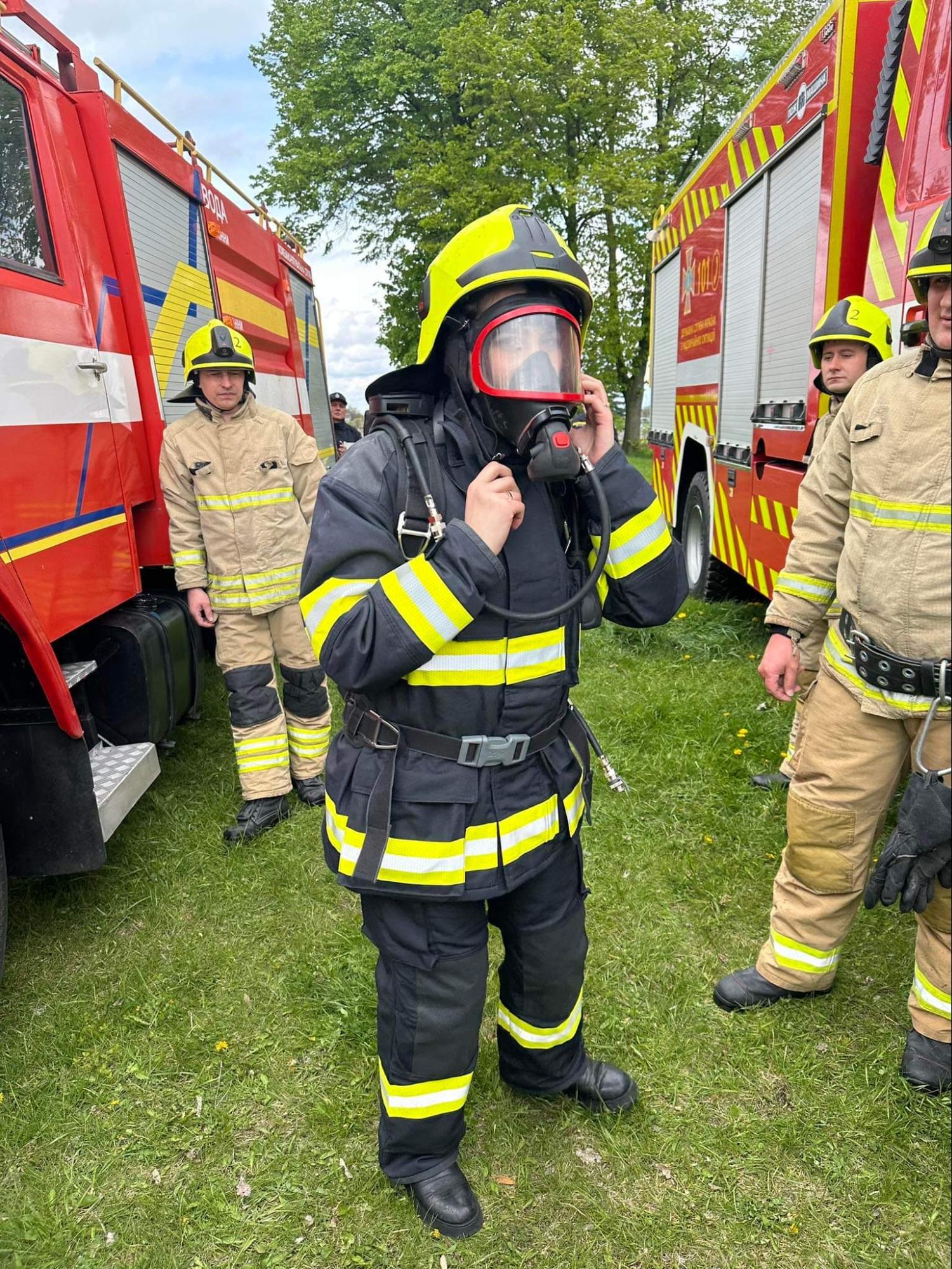
During the training of the women's firefighting team. Photo from Alla Karpiuk's archive
Not everyone in the community took the activities of these active women seriously. Some called it a publicity stunt, others thought the women were trying to prove something, and some said that there were special people who should handle fires.
"But we have a different idea," says Alla Karpiuk. "We're not just a women's firefighting team that wears helmets and gear and shows up. Our goal is to help and support the men who are professionally trained. We focus not only on extinguishing fires and saving property but also on providing medical aid. It's vital to save lives and provide all necessary resuscitation measures before the ambulance arrives, even to support the person."
Strength in women volunteers!

Training by the Rivne SES for the women's volunteer fire brigade. Photo from Alla Karpiuk's archive
This philosophy has become the motto of the women's volunteer firefighting team of the Velika Omeliana community. It started with eight women, and now there are 21 volunteers. Most are employees of the village council, including deputies and executive committee members. Among them are also teachers, accountants, and shopkeepers.
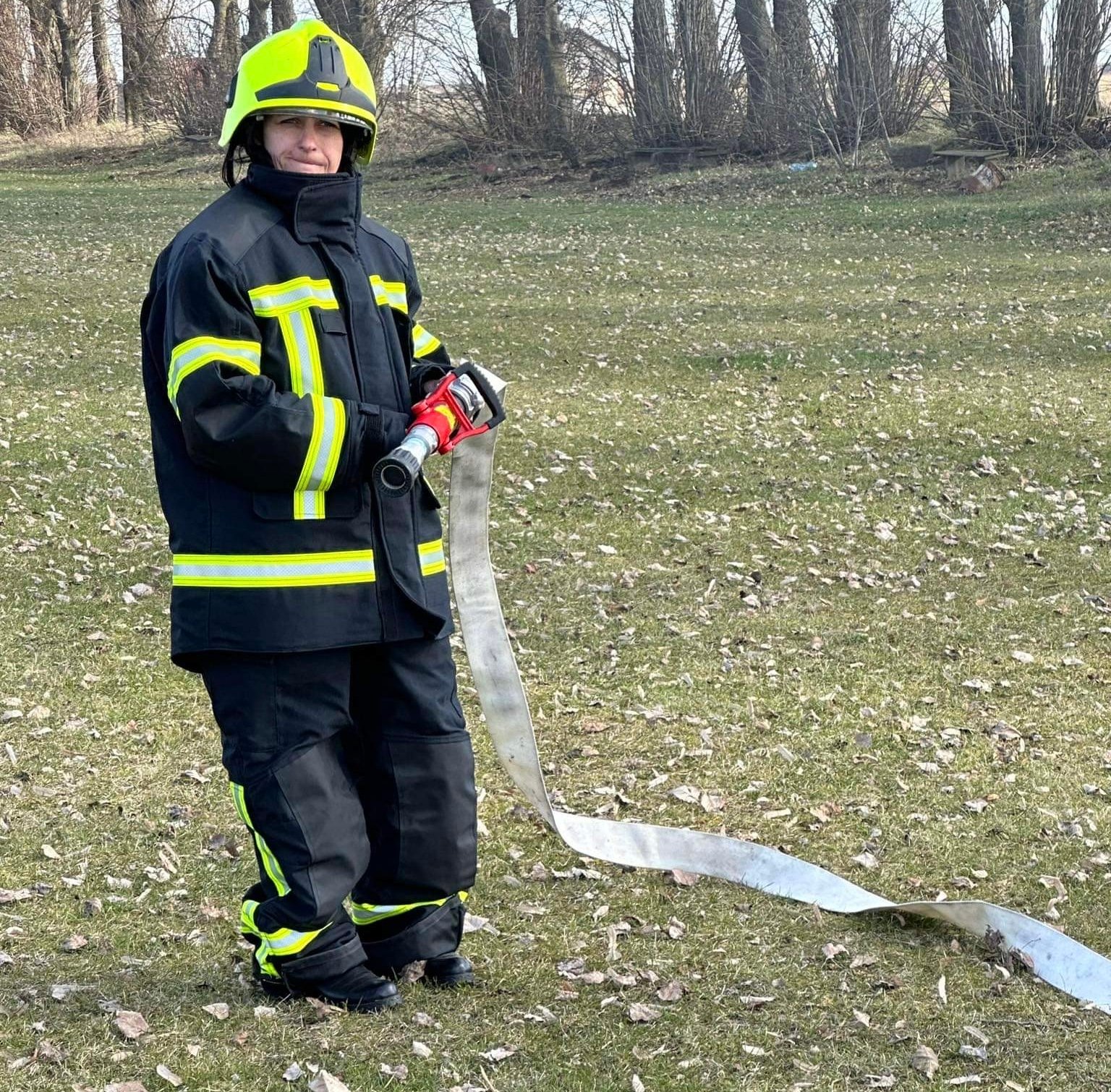
An empty hose weighs about 5–7 kg; when filled with water, it's 90 kg. Photo from Alla Karpiuk's archive
The team trains in their free time. Under the guidance of SES instructors, they have learned to deploy fire hoses, supply water, and provide pre-hospital aid. The community has three fire trucks and all the necessary equipment to ensure quick response.
"You feel like a superhero, and you immediately get the feeling that you can do anything," says one of the women, who, according to professional mentors, are successfully mastering firefighting skills.
One woman from the crew, Liudmyla Rusylo, works in the community's department of education, culture, youth, and sports. Her husband died defending Ukraine. She says she joined the volunteer team in his memory and for the safety of her three children and other community residents.
"We live in wartime. Thank God everything is fine now, and we haven't had big fires yet, but I'm confident that we're ready," says Liudmyla Rusylo.
Does it really work?

Photo from Alla Karpiuk's archive
So far, the women firefighters haven't had to respond to any calls. However, they continue to undergo certified training and prepare for any emergencies. The community has 5,800 residents and is spread over 103 square kilometers, so the distance is significant.
There is already a male volunteer team in the community and 80 fire rescue units in the Rivne region. Are men ready to accept women in this profession?
"It's an interesting question. In private conversations, opinions among our men are divided. Perhaps because it's hard for them to imagine a woman doing physically demanding work, one of the main arguments is: 'Can a woman pull an 80 kg person out of a fire? Can she work at the limit of human capabilities, wearing combat gear, a breathing apparatus, holding a heavy fire hose, in low visibility and high temperatures?'" says Allla Karpiuk. "There are many such questions. To them, I can confidently say that women can do this job, too. If a woman has the necessary knowledge, good health, is physically fit, and knows all the required standards — the answer is definitely 'yes'!"

Cozy Homes for IDPs: How a kind Ukrainian woman helps displaced people settle in

Ukrainian House in the capital of Transylvania: How a community of refugees created a shared space from scratch





